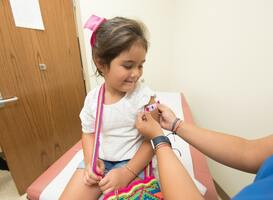In 2020, fewer people received a disease that is vaccinated against within the National Immunization Program (RVP), compared to 2019. This is most likely due to the corona measures, such as keeping distance, washing hands and traveling less, the RIVM reports.
–
The number of reports decreased in particular for whooping cough, mumps, pneumococcal disease and measles. For whooping cough even by 85 percent. For measles, there were only two reports last year, while there were 84 reports the year before.
The number of reports of chronic hepatitis B decreased by about a third compared to 2019. This is probably not a real decrease, says RIVM. Due to the corona pandemic, people have gone to a doctor less often. As a result, less has been tested for hepatitis B, among other things.
Haemophilus influenzae type b
The only exception to the decreased number of reports was Haemophilus influenzae type b (Hib). This is a bacterium that is sometimes found in the nasal cavity of almost all people. In 2020, the number of reports increased to 68, while in 2019 there were only 39 reports. RIVM is investigating where this could be the cause.
Furthermore, in 2020 there were again no reports of rubella and polio. There were three patients with diphtheria and two with tetanus. The number of reports of meningococcal disease type W also decreased further after the addition of this vaccination to the NIP in 2018.
Increase in national vaccination rate
Vaccination rates have risen for the second year in a row. This is true for 2-year-old children who were 0.5 percent more fully vaccinated compared to 2019. The HPV vaccination coverage for girls even increased by 10 percent. Almost all children of 2 years have received their vaccination before the outbreak of the corona virus. It seems that the corona measures in 2020 have had little negative impact on the NIP.
By: National Care Guide
–


